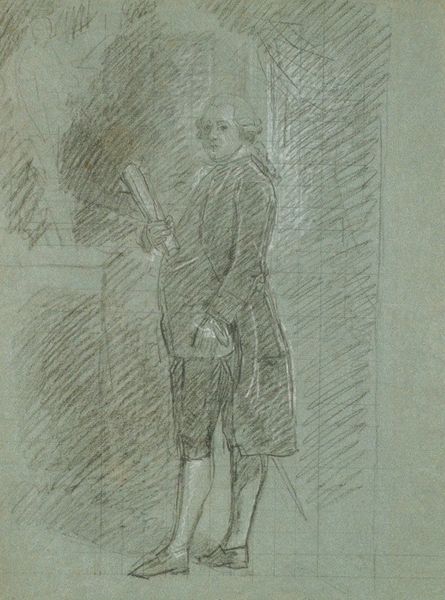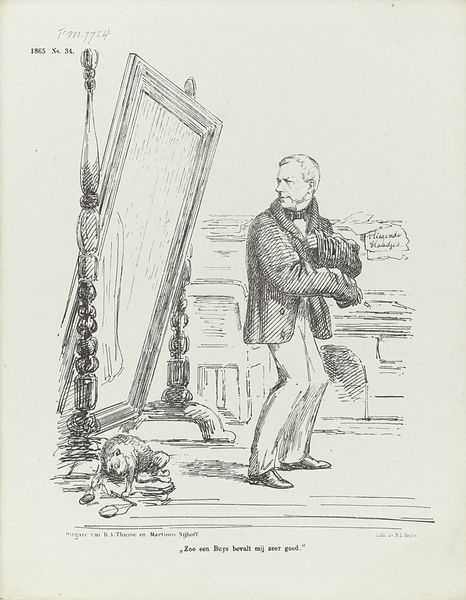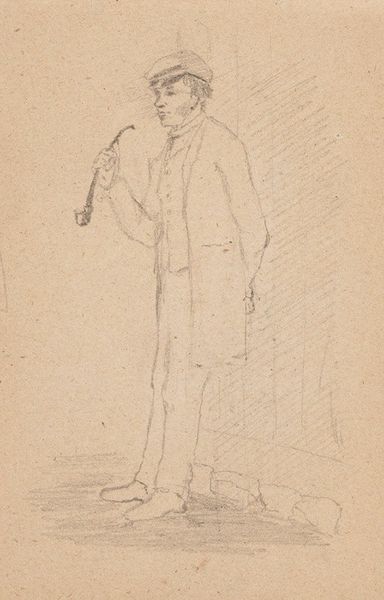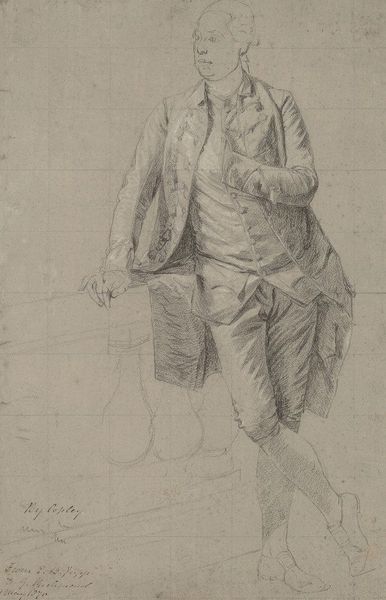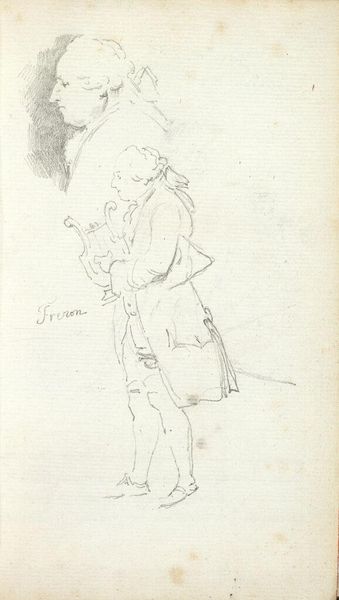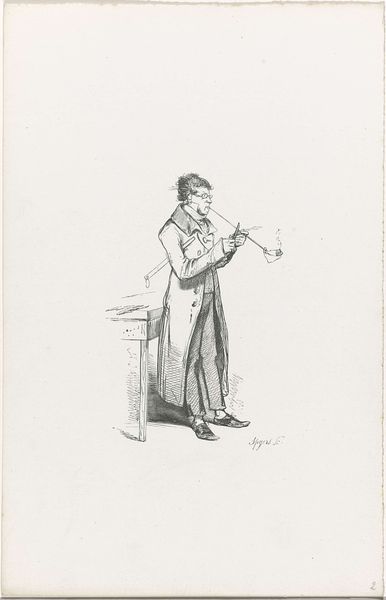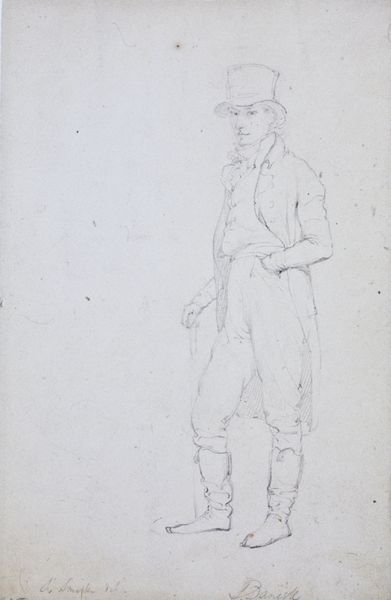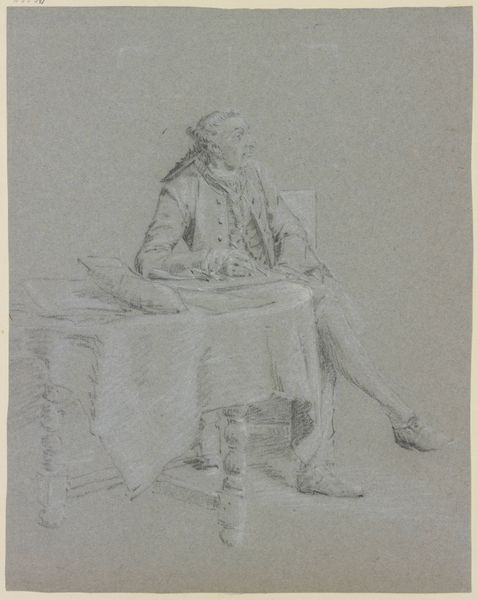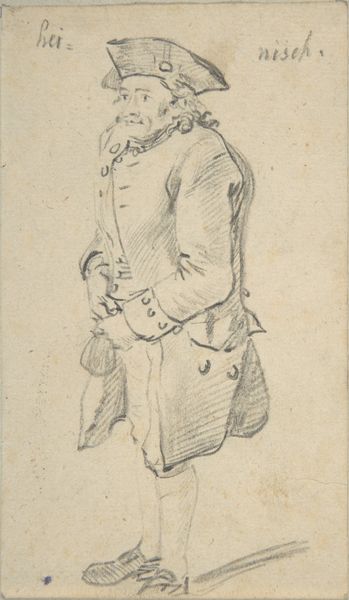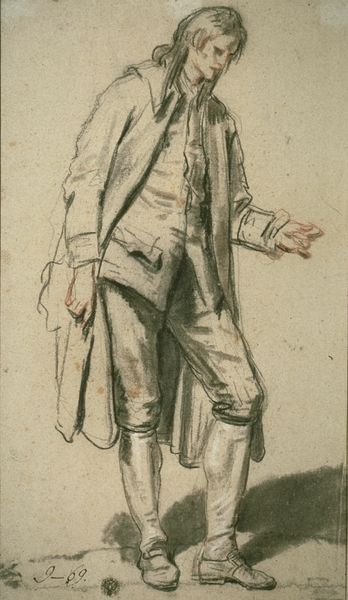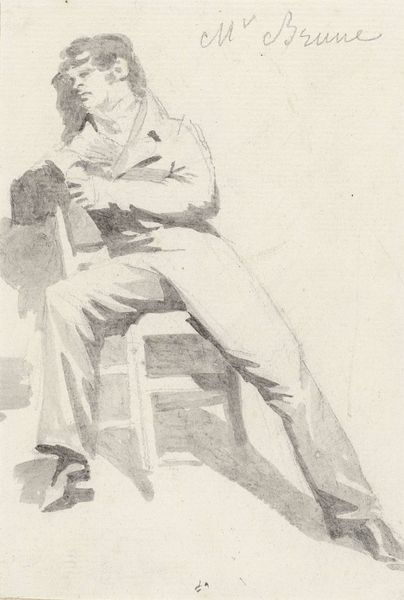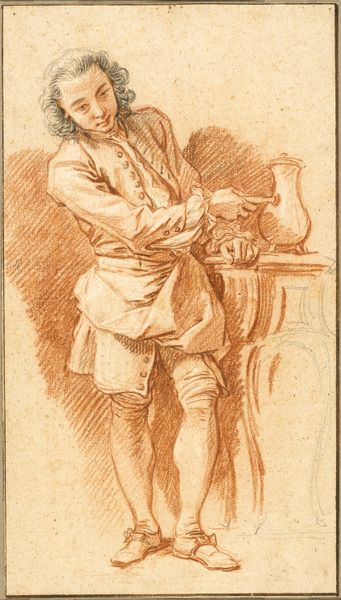
Self-Portrait at Fifteen (from McGuire Scrapbook) 1837
0:00
0:00
drawing, pencil
#
portrait
#
drawing
#
self-portrait
#
pencil sketch
#
figuration
#
romanticism
#
pencil
Dimensions: 4 3/4 x 4 in. (12.1 x 10.2 cm)
Copyright: Public Domain
Editor: So, here we have William Henry Powell’s "Self-Portrait at Fifteen," a pencil drawing from 1837. The delicacy of the lines gives it a very youthful, almost fragile feel. It's just a quick sketch, really. What strikes you about it? Curator: The ephemerality of pencil mirrors the fleeting nature of adolescence, doesn't it? Notice how Powell positions himself, clutching papers, near what seems to be a writing desk. The symbolism here is potent: the almost theatrical gesture indicates a striving for intellectualism. Editor: The pose does seem a little staged, now that you mention it. Is that common for self-portraits from this period? Curator: Indeed. Think of it as an aspiration made visible. This isn’t simply a record of appearance; it's a declaration of intent. He wants us to perceive him as scholarly, artistic, perhaps even on the cusp of adulthood. What of the classical elements present here – do these architectural fragments carry a specific resonance for you? Editor: I suppose it adds to that aspirational feeling… a connection to history and knowledge. It’s interesting to consider how consciously Powell constructed this image. Curator: Precisely. And it speaks volumes about the cultural values he’s internalizing. A portrait became not just a likeness, but an encoded visual biography reflecting an ideal self. The slight air of uncertainty perhaps mirrors that transition from boyhood to adulthood. Editor: That makes me see the drawing in a completely different light! It’s more than just a self-portrait, it’s a performance. Curator: Precisely! Each line, each shading choice adds layers to a projected persona, inviting us to decode his personal aspirations and cultural inheritance. And for you, as an artist yourself, might this also serve as a prompt to consider your own presentation of self? Editor: Definitely! It’s fascinating to think about the symbols we use to define ourselves, even today. Thanks for pointing those out!
Comments
No comments
Be the first to comment and join the conversation on the ultimate creative platform.
